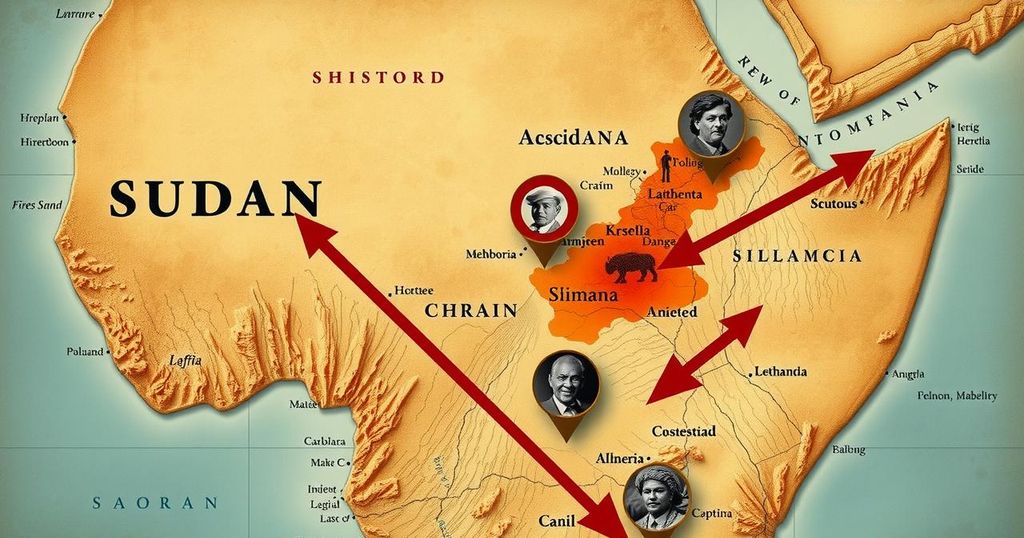Sudan has a history marked by instability, including civil wars and coups. Key events include the ousting of President Nimeiri in 1985, the rise and fall of Omar al-Bashir, the Darfur conflict, and the ongoing battle involving the Sudanese Armed Forces and Rapid Support Forces. Presently, Sudan faces severe humanitarian crises due to continued violence and military strife.
Sudan has experienced profound instability characterized by armed conflicts, military coups, and civil wars. The current situation includes a war that has lasted two years between the Sudanese army and the paramilitary group, Rapid Support Forces (RSF). Recently, the Sudanese army announced its complete takeover of the Presidential Palace in Khartoum, indicating a significant milestone in the ongoing conflict.
The historical context reveals crucial moments in Sudan’s tumultuous political history. In 1985, President Jaafar Nimeiri, who came to power through a coup in 1969, was overthrown following a popular uprising, leading to a brief phase of civilian governance.
Omar al-Bashir staged a coup in 1989, establishing a 30-year rule with the support of Islamist figures like Hassan al-Turabi, who later distanced himself from Bashir. Under U.S. pressure, Sudan expelled Osama bin Laden in 1996, who had spent five years in the country. The U.S. subsequently targeted a pharmaceutical plant in 1998, alleging its connections to chemical weapons production.
In 2003, the Darfur conflict erupted, resulting in the deaths of around 300,000 individuals and the displacement of millions. Bashir faced charges from the International Criminal Court for genocide and atrocities committed in this region. A peace agreement in 2005 ended decades of civil war between the north and the south, culminating in South Sudan’s independence in 2011.
Bashir was ousted in 2019 amidst mass protests, leading to strained relations between military leaders and civilian politicians. As of April 2023, fighting between the army and RSF has intensified, driven by grievances regarding military governance, leading to a widespread humanitarian crisis in Sudan, with famine conditions affecting numerous regions.
The history of Sudan showcases a cycle of military interventions, civil unrest, and humanitarian crises. From the ousting of President Nimeiri in 1985 to the current conflict between the Sudanese Armed Forces and RSF, each event has shaped the nation’s struggle for stability. The long-standing conflicts and political upheavals highlight the complex challenges faced by Sudanese society as it attempts to navigate a path toward peace and governance.
Original Source: www.usnews.com




